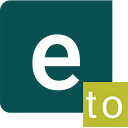Print vs digital — no, there isn’t a conflict between the two methods of presenting content, but the communication strategies should treat both with maximum attention. Here is why.
According to neurosciencemarketing.com, a study was conducted in America, in 2015, that tested the different responses the brain has in digital and printed environments. The study results show that print still has great power over the consumer’s perception. That doesn’t mean that people prefer print to digital, but that they are rather inclined to first read the printed materials and then go to the digital environment.
PRINT IS MULTI-SENSORY
Online has many benefits, but printed material brings different sensations depending on its features. The print has the advantage to be a tactile stimulant for the reader, while the digital environment focuses on the visual component. Paper density, its texture, and the sensations the reader has when holding a printed material stimulate the senses differently from digital materials.
Media Update quotes Mark Beare, the director of The Publishing Partnership, who says that when you read printed material or a book it is much easier to remember where you’ve stopped, how much you’ve read and, especially, where on the page is the information you’ve seen.
DOES PRINT HAVE A MORE EFFICIENT ENGAGEMENT?
Access to an attractive material has a greater impact. The reader will remember faster and in a longer term the information, which leads to a better engagement with the brand. However, the printed materials have the disadvantage that the engagement isn’t made in real-time as it is online. The printed material is a good element of reach and awareness, as the potential customer has the possibility to interact through it with the brand. Nevertheless, in terms of reach, digital materials are superior. In the online environment, through promotion mechanisms, you can reach a larger audience with a minimum of effort and time.
DIGITAL — EASIER TARGETING
If we speak about a company that makes printed promotional materials for products, services, or just a presentation of the organization, we can say that the targeting will be made correctly, but with a big effort and in a large amount of time. The employees will spread the materials to partners in other companies. When it comes to digital materials, by using social media channels and the website, you can make a specific target in a short time and with a relatively small effort.
PRINT/DIGITAL COSTS
The great advantage of the digital environment is the reduced costs that are implied. The print involves higher costs for production and distribution. In the digital environment, there will be no costs for printing and transporting materials to consumers. More than that, any correction of the printed materials involves extra effort (creation of errata, displayed in print or the places where it is distributed).
PUBLISHING DESIGN PRINT/DIGITAL
If we look at the design, we can tell that things are similar. Actually, we can say that they were similar until a few years back. Nowadays, there is the possibility of creating “animated brochures” that manage through dynamics to create greater interaction with the reader. These digital brochures allow an infographic to fill as you discover it, or a map to reveal visible points that have an intermittent light effect.
Digital and printed materials don’t exclude each other. The ideal case is when the organization manages to use them in a mixed strategy, thus amplifying each benefit and aiming to overcome the disadvantages.
Sources:
- Neuromarketing — neurosciencemarketing.com
- Business 2 Community — business2community.com
- Media Update — mediaupdate.co.za
- Forbes — forbes.com
Learning project by Toud — We help you tell your story! — branding, logo design, UX design, UI design, web design, graphic design, presentation design
